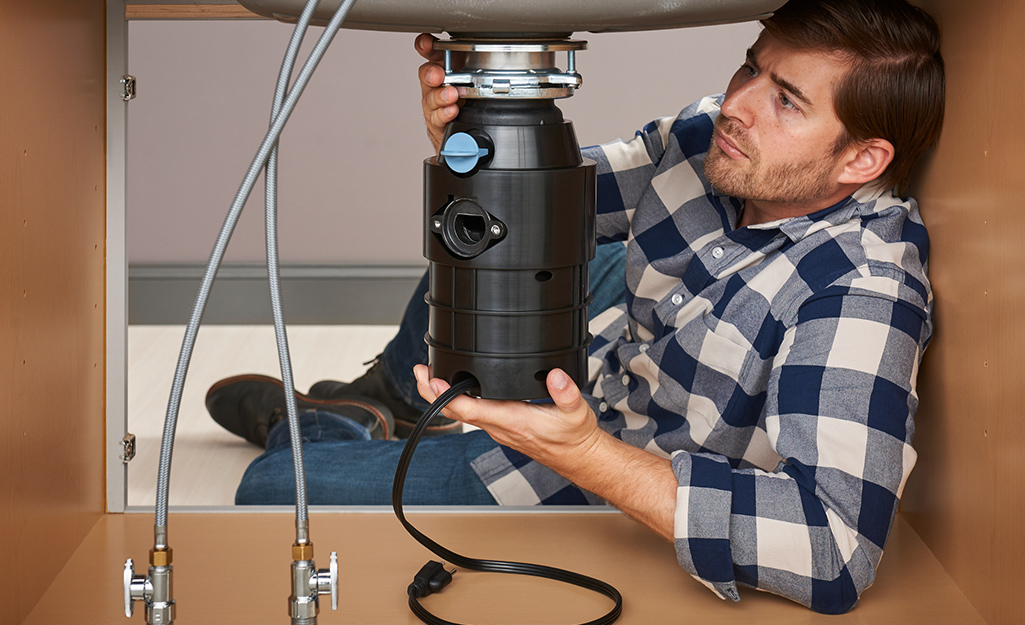This post listed below in relation to Why Is My Garbage Disposal Leaking From the Bottom? is really insightful. Don't overlook it.

Waste disposal unit are necessary kitchen area appliances that assist in disposing of food waste efficiently. Nonetheless, a dripping garbage disposal can be a discouraging and messy trouble to deal with. Thankfully, several leakages can be taken care of quickly with a couple of easy actions. In this article, we will review exactly how to repair a leaking waste disposal unit efficiently.
Intro
Waste disposal unit are installed under kitchen sinks and are made to shred food waste into smaller pieces, allowing it to go through the pipes system conveniently. While these tools are generally reputable, leaks can happen with time as a result of wear and tear, loose connections, or damage to the unit.
Step-by-Step Guide to Dealing With a Dripping Garbage Disposal
Shut off the Power
Prior to attempting any kind of repairs, make sure that the power to the garbage disposal system is turned off to avoid the risk of electric shock.
Locate the Leak
Determine the precise location of the leakage and identify the cause
Tighten Links
Make use of a wrench to tighten any loose links between the disposal system and the plumbing system.
Change Seals or Gaskets
If the leakage results from worn seals or gaskets, eliminate the old parts and replace them with brand-new ones.
Patching Fractures or Openings
For splits or openings in the disposal device, usage epoxy or a suitable patching material to seal the broken location.
Determining the Source of the Leak
Before attempting to deal with a leaking waste disposal unit, it is important to determine the source of the leak. This can generally be done via visual examination or by carrying out straightforward examinations.
Visual Examination
Inspect the garbage disposal device carefully for any indications of water leak. Pay very close attention to locations around seals, gaskets, and connection factors.
Checking for Leakages
One means to test for leaks is by running water via the disposal system and looking for any type of visible indications of leakage.
Typical Reasons For Leaks in Rubbish Disposals
Worn Seals and Gaskets
Seals and gaskets play an essential function in avoiding water from dripping out of the garbage disposal. In time, these components can weaken, causing leaks around the disposal device.
Loose Links
The connections in between the garbage disposal and the pipes system can end up being loose with time, creating water to leakage out throughout procedure.
Splits or Openings in the Disposal Device
Physical damages to the waste disposal unit, such as cracks or holes in the real estate, can additionally lead to leakages.
Devices and Materials Needed for Dealing With a Dripping Waste Disposal Unit
Prior to beginning the repair procedure, collect the necessary devices and products, including a screwdriver, flexible wrench, plumbing professional's putty, replacement seals or gaskets, and epoxy or patching product for repairing fractures or holes.
Testing the Garbage Disposal After Repair
Once the repair work is full, evaluate the garbage disposal by running water via it to make sure that the leakage has been solved.
Preventive Maintenance Tips to Prevent Future Leakages
To prevent future leaks, it is important to perform normal upkeep on your garbage disposal. This consists of maintaining it tidy, preventing putting non-food products or difficult items down the disposal, and occasionally checking for leaks or other issues.
Conclusion
Finally, dealing with a leaking garbage disposal is a fairly straightforward procedure that can be finished with standard devices and products. By following the steps outlined in this short article and exercising precautionary maintenance, you can maintain your waste disposal unit in good working condition and stay clear of expensive repair work in the future.
What to Do About a Leaking Garbage Disposal
A leaking garbage disposal often goes unnoticed until you confront a sopping cabinet, a foul-smelling puddle, or an audible drip-drip-drip from the unit. The fix can be frustrating, too, because the leak can stem from a number of components in the system. Fortunately, with a little sleuthing, you can zero in on the leak and—depending on the exact location—stop the icky oozing and repair the component that caused it. Worst case scenario, if it turns out that the garbage disposal must be replaced, installing a new one is a reasonable do-it-yourself task for those with basic plumbing skills. Read on to keep the cash you’d otherwise hand over to a pro.
Prepare to find the leak
Prior to testing the garbage disposal for leaks, unplug it at the wall outlet and turn off the power from the breaker box to prevent electrical shock. Then insert a watertight sink stopper into your sink drain and wipe the unit dry with a clean cloth. In any handy container, mix a few drops of food coloring into a few cups of water, and pour the dyed water onto the sink stopper to help you locate the leak.
Investigate the source
the top, where the disposal meets the sink drain the side, where the dishwasher hose or main drain pipe connects to the disposal or the bottom of the unit Inspect each of these locations while gliding a light-colored rag over the unit; the dyed water will readily show on the rag and reveal the location of the leak. If a leak isn’t immediately apparent, remove the sink stopper and pour a few more cups of dyed water down the sink drain, then check for leaks again. Leaks near the top of the unit are more likely to show themselves while the sink is plugged, while side and bottom leaks are more noticeable while the sink is unplugged.
The metal sink flange that sits directly inside the sink drain is typically sealed around the top with plumber’s putty (a clay-like sealant) and then secured from under the sink with bolts. If the plumber’s putty deteriorates, or the bolts loosen, the flange can no longer form a watertight seal between the sink drain and the disposal—which could cause a leak at the top of the unit.
To reseal the leaky flange, you must first detach the garbage disposal. Start by loosening the screws securing the main drain pipe to the disposal, then loosen the screws in the metal clamp securing the dishwasher hose to the disposal and detach the drain pipe and dishwasher hose from the disposal. Loosen the screws in the mounting ring that connects the disposal to the metal mounting assembly beneath the sink, then pull down the disposal and carefully set it on a clean, dry surface. Loosen the bolts in the mounting assembly with a wrench, then pull down the mounting assembly and set it near the disposal.

I discovered that page on The Handy Guide To Fixing Your Garbage Disposal Leaking while doing research the web. Loved our piece? Please share it. Help somebody else discover it. I value reading our article about Why Is .
Schedule Now!